TV ports explained: What all those HDMI, USB and other connections are for?
TV ports explained: What all those HDMI, USB and other connections are for?
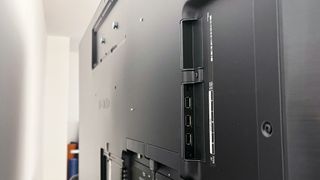
If yous're not someone who sets up a new Television receiver every week the way I am, then you're probably not very familiar with the different connections and ports plant on today'southward smart TVs. And, if you're like well-nigh people, the just fourth dimension you really wait at those connections is when y'all're trying to set upwardly a new Boob tube or add a new device, like a game console or Blu-ray player. Which can make those occasional excursions backside the TV a piffling intimidating. There's a lot of connectors, and you may not be certain what most of them do.
We are here to help. This handy guide will place the most common ports found on modern smart TVs, and aid y'all know what specific details are important for getting the correct connection for the right device.
- The best TVs we've tested and reviewed
- Need help? How to fix your new smart TV
- Plus: How to lookout man the Halloween movies in order online
Where do I find the ports on my Television receiver?
On the majority of smart TVs, you volition find the ports on the dorsum of the set, commonly virtually the right or left side of the chassis for easy admission. While many TVs consolidate all of the ports into a single panel of connections, some sets have ii — one for the main HDMI and USB connections, and a second for less-used ports, like Blended video and Ethernet.
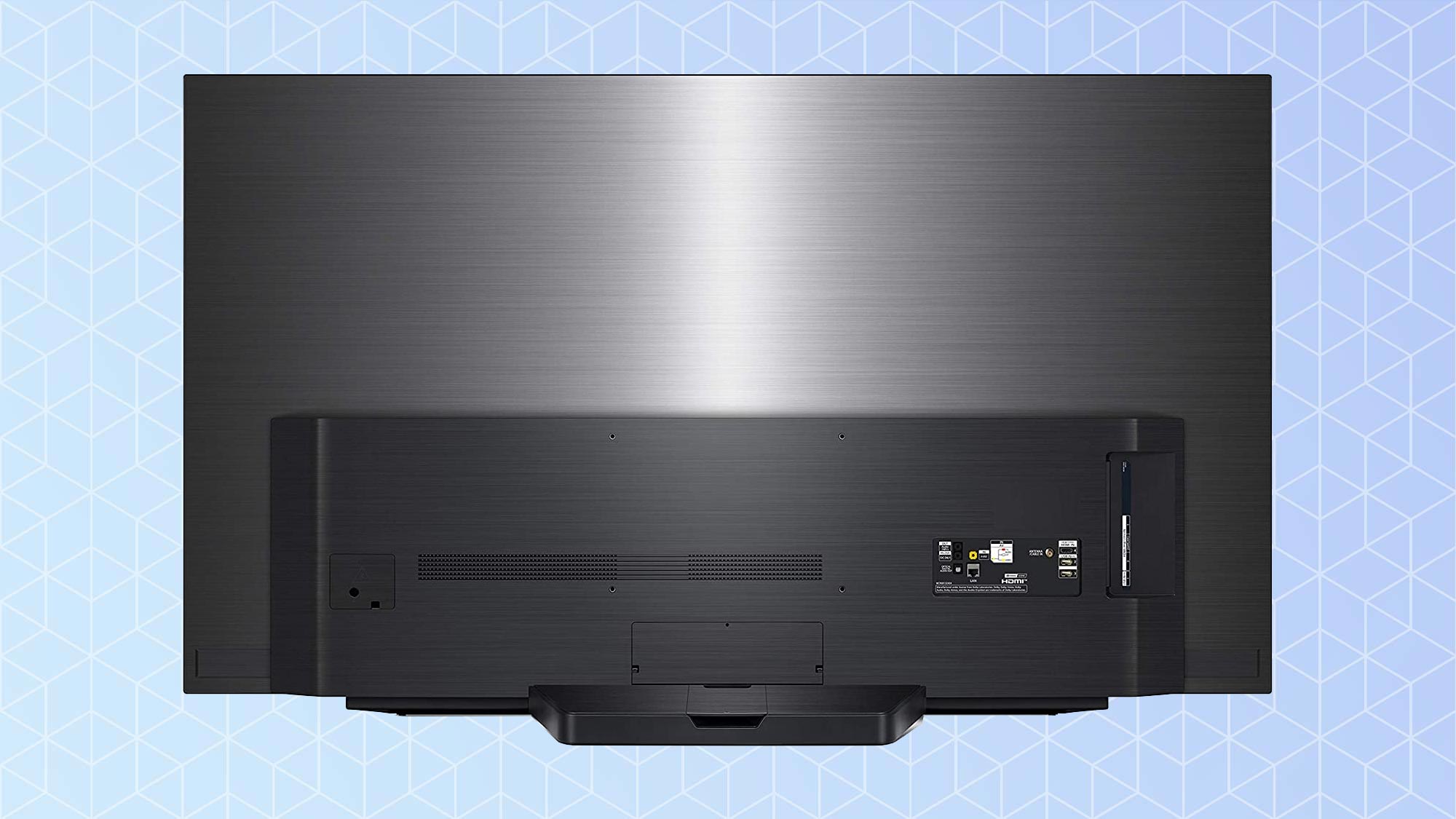
In some instances, a Television receiver volition accept a split box that includes all of the usual TV ports, connected to the TV by a single cable. This is the instance with Samsung's OneConnect box, found on several of it'due south high-cease TVs, every bit well as select OLED models from LG.
Video and audio connections
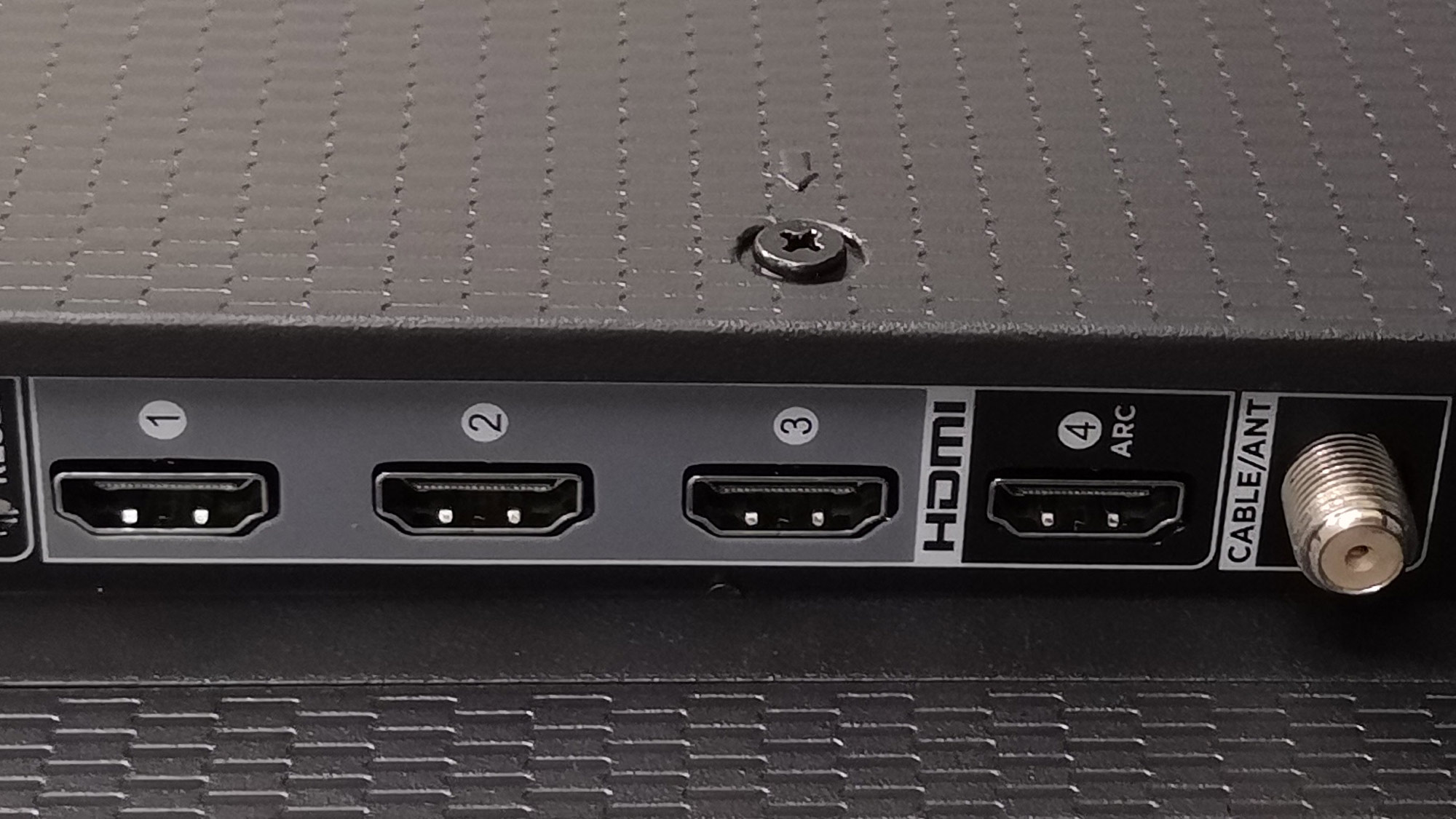
HDMI: HDMI stands for High-Definition Multimedia Interface, and is the standard connection for modern video and audio across TVs, media players and sound products. Almost any device you desire to connect to your Television receiver volition utilize HDMI, but that doesn't mean that the standardized HDMI connector will always offer the same connection and features. With a standardized connector shape and digital signal that can carry everything from ultra Hd video and surround sound to internet information, HDMI is a versatile connection. But there's more than 1 version of HDMI, and new HDMI standards have added new features and functions to seemingly identical HDMI ports.
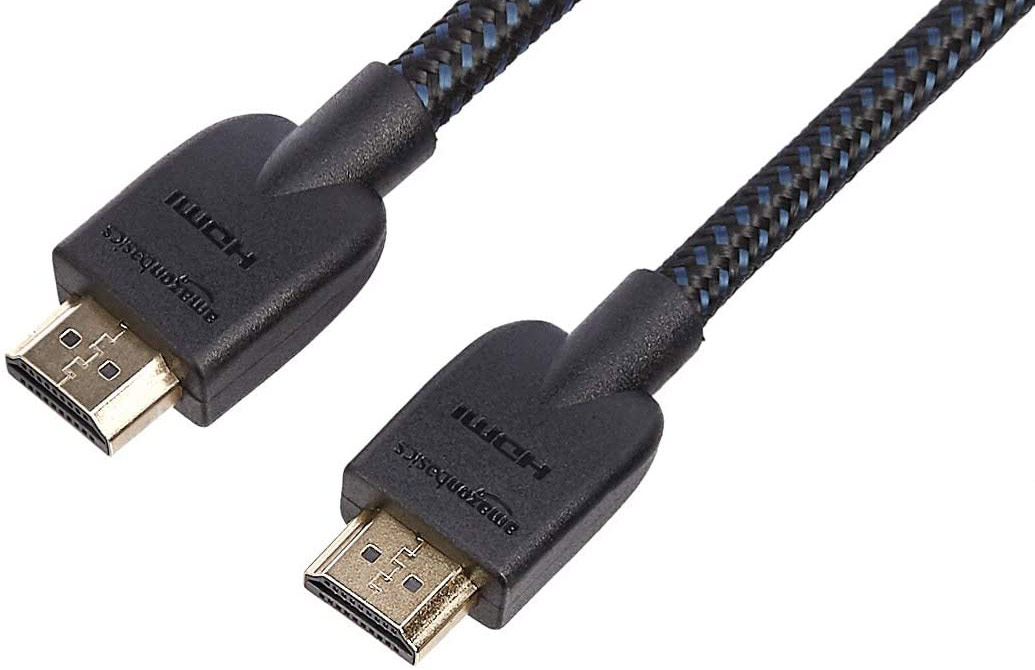
In fact there are three chief versions of HDMI that you're likely to find on today's TVs, each with slightly unlike capabilities and features. If you're lucky, these are clearly marked on your Tv set, along with identifying what standard they utilise. More oftentimes however, you'll need to dig into the user'due south manual or find the product folio for your TV and expect at the technical specifications to determine which are which.
- HDMI i.four - Supports 1080p and 720p video and sound, but mostly isn't used on mod 4K TVs.
- HDMI 2.0 - Supports 4K moving picture and refresh rates upwards to 60Hz. Unless specifically identified as HDMI ii.i, this is the most common HMDI version in use on today'due south TVs.
- HDMI ii.0a - An update to HDMI two.0 that added back up for High Dynamic Range (HDR) metadata.
- HDMI 2.0b - An update to HDMI 2.0 that added back up for Hybrid Log Gamma (HLG) video, which is a different form of HDR used in Television receiver broadcasting.
- HDMI 2.1 - used by the latest game consoles and plant on higher-end TVs, HDMI 2.1 offers more than bandwidth for supporting higher frame rates, up to 8K resolution, and a number of distinct features. Here are the best TVs with HDMI two.1.
Generally speaking, almost current TVs have 3 or 4 HDMI ports (we recommend opting for more when you can). If you find yourself with more than devices than you have ports, you should probably get one of the best cheap HDMI switchers to add some extra connections.
Find out more about the latest HDMI offerings in our article What is HDMI 2.1? Here's everything you demand to know.
ARC or eARC: Information technology's as well probable that ane of those HDMI ports volition be labelled ARC, which is short for Audio Render Aqueduct, a feature of some HDMI connections. It offers two-way communication between devices over a unmarried HDMI connection, letting y'all use a single HDMI cable to connect a TV and soundbar, using that single HDMI as both an input and an audio output.
A newer version of ARC is included in HDMI 2.0 and 2.one, chosen enhanced sound return channel (eARC). The biggest improvement eARC offers is support for full-resolution sound signal, meaning that it supports Dolby Atmos and other uncompressed audio formats.
Larn more in our guide What is HDMI ARC?
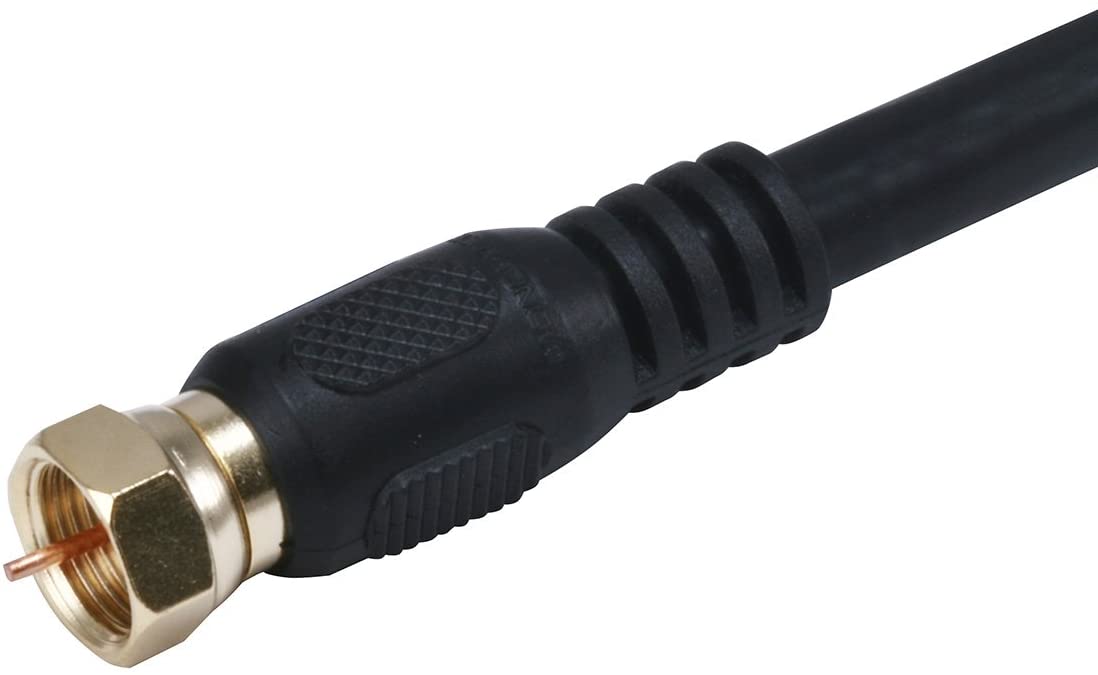
Coaxial/RF connector: A threaded connection used with coaxial cable for connecting a Telly antenna or older cable and satellite TV equipment (though cablevision and satellite now use HDMI exclusively). This connexion uses a screw-on RG-half dozen or RG-59 cable, and feeds into the Boob tube'south built-in TV tuner. Because coaxial cablevision is used to transmit both UHF and VHF radio waves, this is the standard connection for over-the-air Telly signal, including current ATSC 1.0 and ATSC 3.0 digital standards.
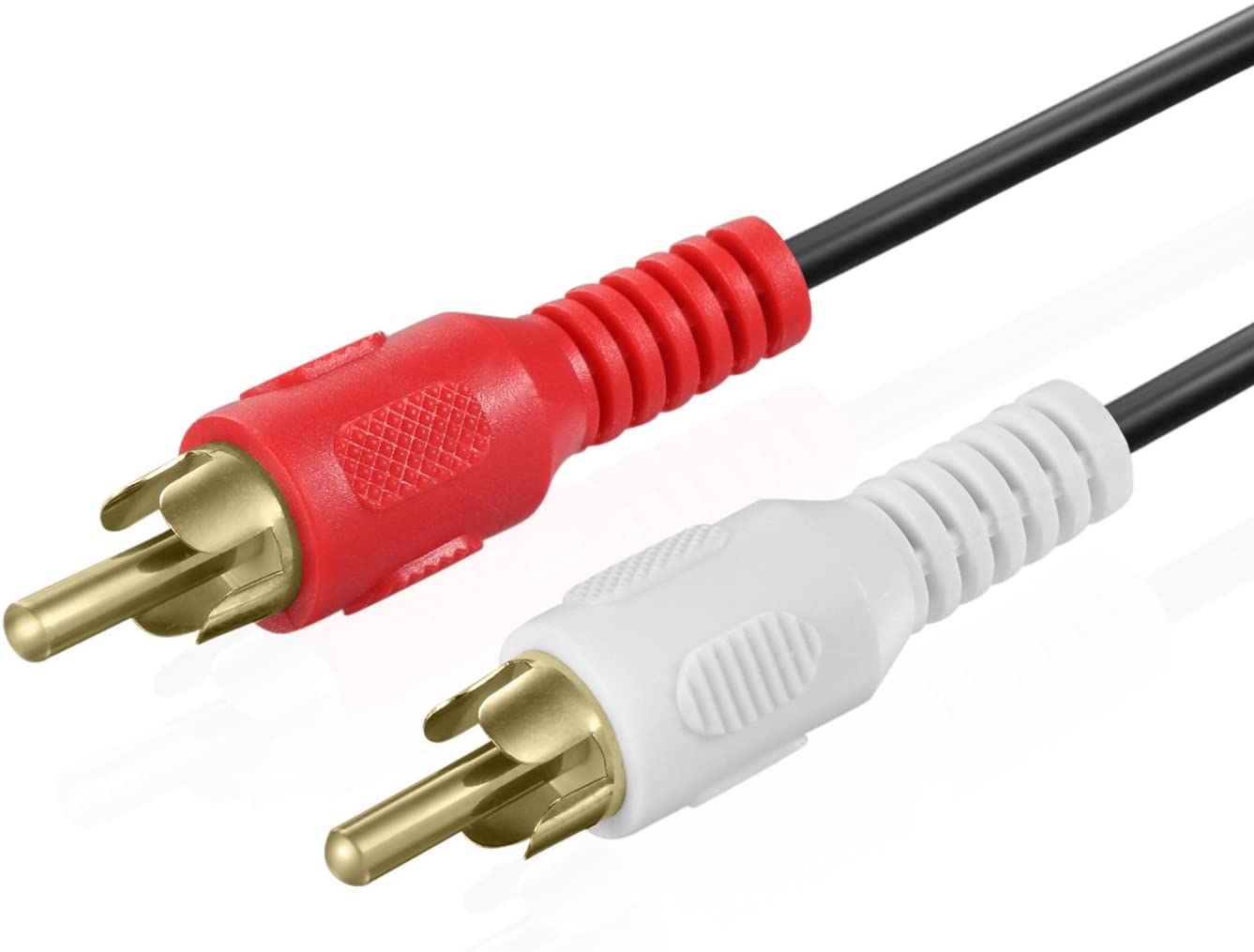
RCA connection: This circular style of plug is often referred to as an RCA connexion, which is short for Radio Corporation of America, the company that developed the plug design. RCA plugs are used for sound, composite video and component video connections.
Blended video: An older video connection that's withal found on current smart TVs, and can be identified by a yellow RCA connection, or sometimes a yellow headphone jack-mode connector (generally with an included headphone jack-to-RCA adapter). This older standard uses analog video indicate, and doesn't support HD video formats, but is useful for connecting older devices, like DVD players and retro gaming equipment.
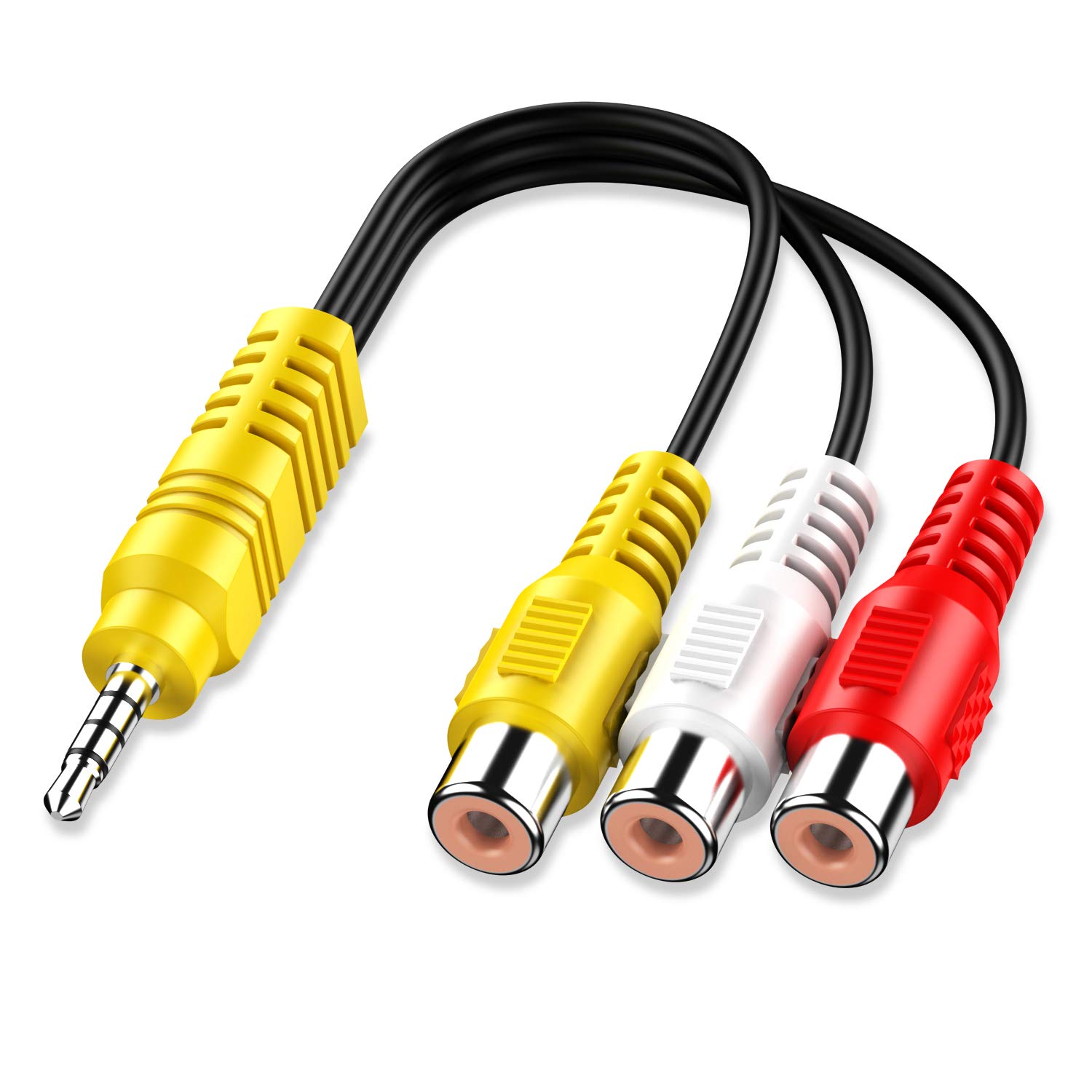
Often on modern TVs, this connection will await very unlike, using a headphone jack-manner connection that is marked yellow or labeled "AV input." This requires an adapter, which combines composite video with RCA stereo sound on a unmarried connection.
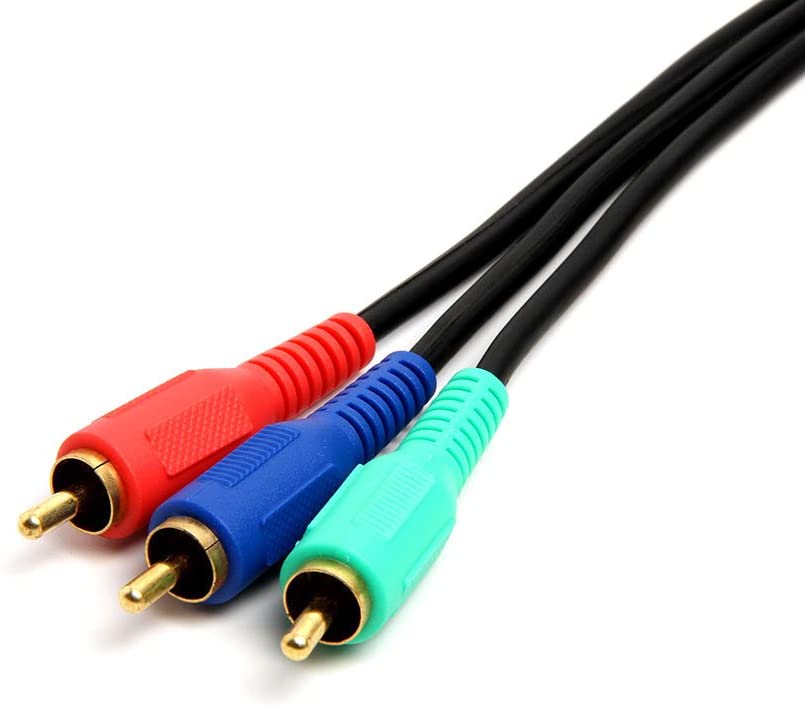
Component video: Another older video connectedness (and i which has largely disappeared from current TVs), is component video. While it uses the same RCA blazon connectors every bit composite video, it carries analog video betoken that has been split into three separate signals for college motion-picture show fidelity.
Stereo analog audio: Easily identified by a pair of red and white inputs, this sound connexion is used for stereo sound, with the white connectedness carrying the left channel bespeak and the ruddy connection conveying the right aqueduct.
Headphone/3.five-millimeter audio jack: A familiar sight that might still go out y'all confused is a normal looking headphone jack. Though rarely located in a convenient spot for your boilerplate set of wired headphones, you lot tin, in fact, use this jack for individual listening with a longer audio cable. The connection is besides used for connecting wired stereo speakers.
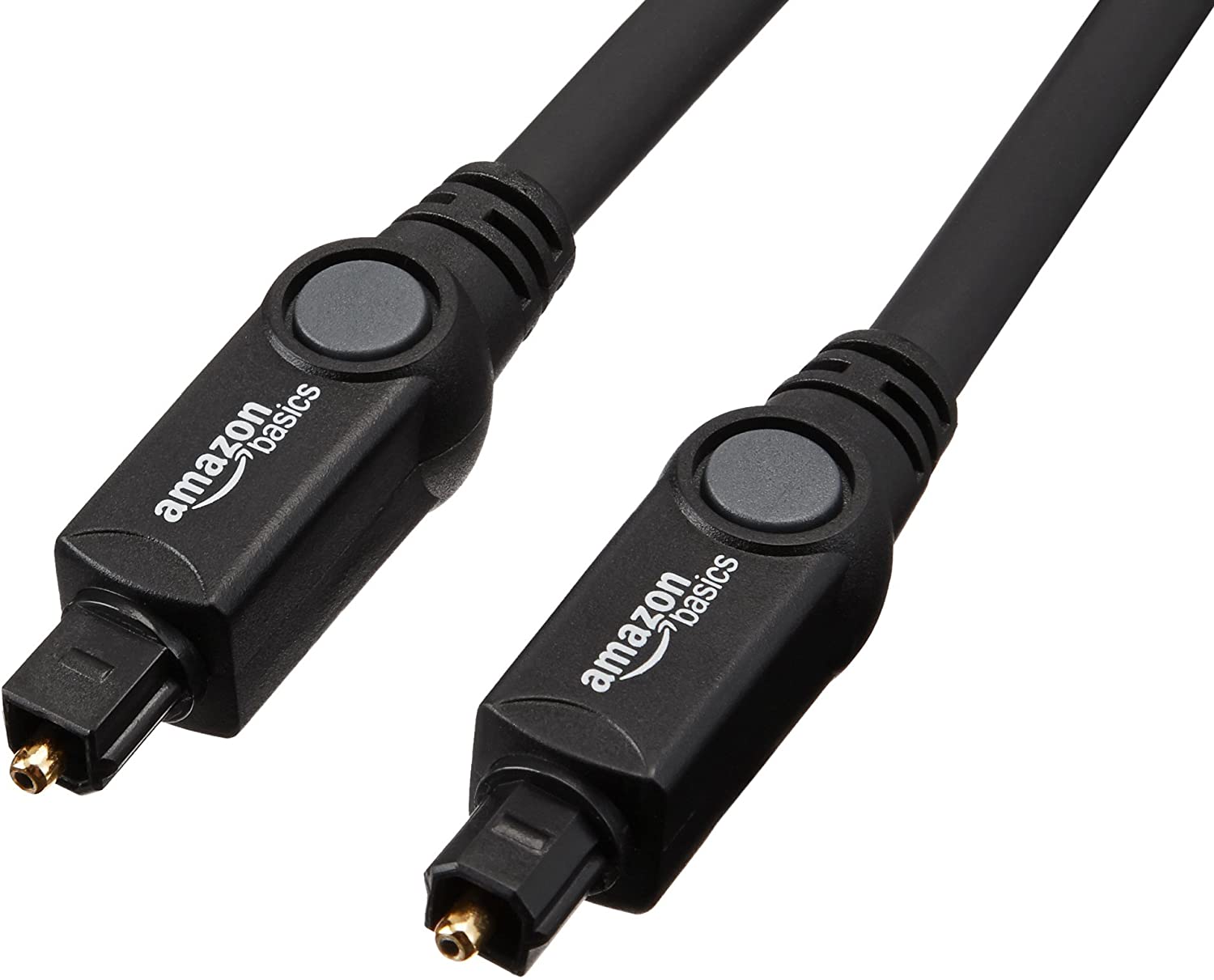
Digital optical audio: (Sometimes labelled TOSLINK or S/PDIF.) An sound connection originally developed by Toshiba, which uses fiber optic cable and pulsed light to send digital sound signals. Though it was a cutting edge technology in it's solar day – digital optical audio was once the must-take connection for multi-aqueduct sound – it doesn't offer the same broad format support of HDMI, and is express to a maximum 16-foot cablevision length. This older audio connection is still found on many TVs thanks to the prevalence of older audio hardware.
Data connections

USB: A common connector on everything from smart TVs to laptops is USB. These ports can exist used for connecting a flash bulldoze for viewing media on the Tv, or to power devices over USB, such as a streaming stick or amplified antenna.
But the USB port on your smart Tv is a little unlike than the 1 you might use on your MacBook Pro. For starters, it uses a USB A connector, which was once ubiquitous for all USB connectivity, but is being supplanted by the more compact USB type-c connector. Additionally, the majority of USB ports on TVs use USB 2.0, an older standard that offers enough bandwidth for things like sharing photos and video, simply not enough for more intensive information transfers.
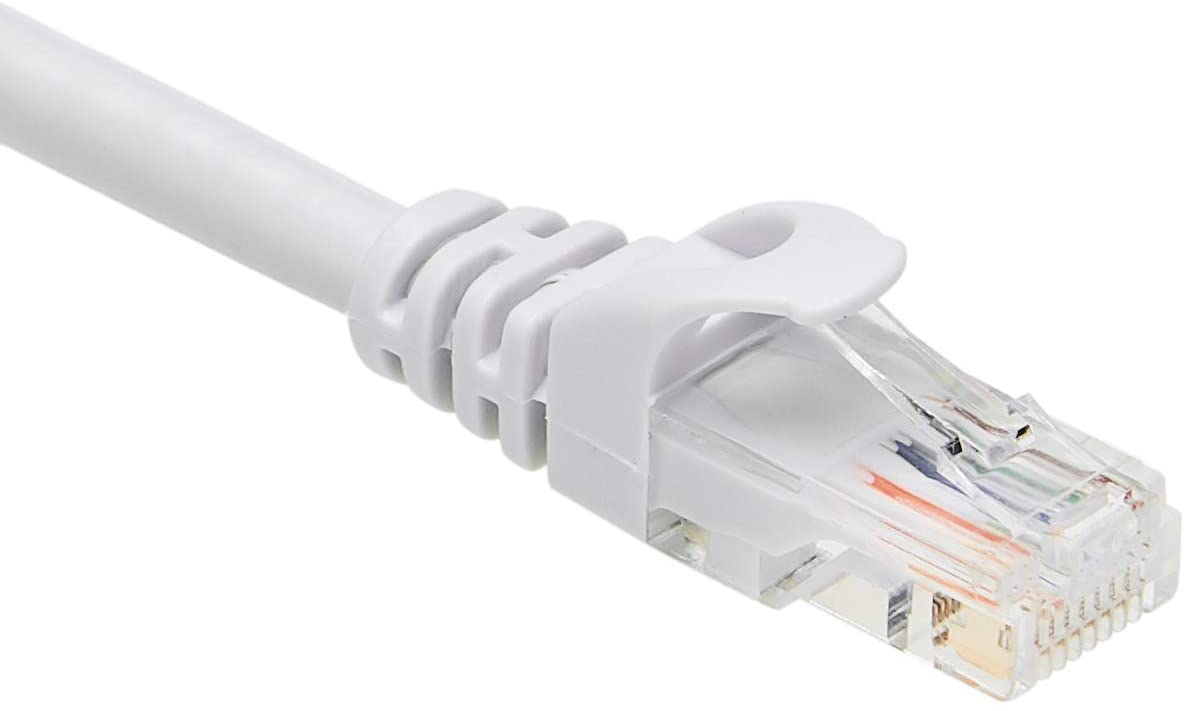
Ethernet: Ethernet or Local Area Network (LAN) is a wired connexion to your home network. While most people will opt for Wi-Fi to connect their smart TV for streaming and other online uses, Ethernet will actually offering a higher data transfer rate, and is gratis from the interference that Wi-Fi can sometimes experience in crowded environments with lots of wireless devices. If possible, we recommend connecting smart TVs over Ethernet.
Wi-Fi: One of two important connections that you won't run across on the connector console of your smart Television set is Wi-Fi. The bulk of current TVs use 802.xi AC Wi-Fi, which is a common, just crumbling standard. Information technology's sufficient for streaming full HD and even 4K video, but it's decumbent to becoming a bottleneck in certain situations.
Some newer TVs, such equally Samsung'due south latest 8K TVs, are equipped with the newer Wi-Fi vi standard or the supercharged variant Wi-Fi 6E. These newer standards offer more data throughput for treatment the increased demand of 8K video, just do require a compatible router with the aforementioned faster standard.
Bluetooth: The other connector without a port is Bluetooth. Used for both wireless sound and data transfer, Bluetooth tin can be used for a variety of devices, from wireless headphones and speakers to peripherals more common to the office, such every bit keyboards and game controllers.
Almost TVs are equipped with Bluetooth these days, but check the specifications for any Telly yous're because, every bit some TVs use Bluetooth exclusively for pairing the remote control, or volition let you connect audio devices, but not peripherals like a keyboard.
Less common connections
If you're at all familiar with TV ports, or even take only taken a moment to familiarize yourself with the basic connections listed higher up, you might still notice that some TVs take a connection or two that aren't plant on that list. These unusual connectors by and large aren't used by the stop user, considering they're not for connecting any sort of media device or entertainment equipment.
Instead these specialized ports are for more than specialized uses, like adding functionality for custom installations, or providing technician access for calibration.
Ane irregular port you lot might notice is an RS-232 connection, which tin accept a couple of dissimilar forms. It may wait similar a serial port (which it finer is) or it can look like a headphone jack. This connection is used by technicians to run diagnostics and system updates on smart TVs.
Another might be labelled IR Blaster. It uses a headphone-style connector, but isn't an output for sound, but an input for an IR sensor, letting a new sensor for the remote control to be placed in a convenient spot when custom installations block the built-in sensor or make it hard to apply.
- Best TVs with Chromecast built y'all tin can purchase correct now
- What'due south the difference? Google Television vs. Android TV
Source: https://www.tomsguide.com/features/tv-ports-explained-what-all-those-hdmi-usb-and-other-connections-are-for
Posted by: langleyscrit1962.blogspot.com


0 Response to "TV ports explained: What all those HDMI, USB and other connections are for?"
Post a Comment